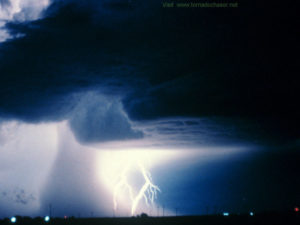Lightning
Lightning Safety – Keeping safe Outdoors
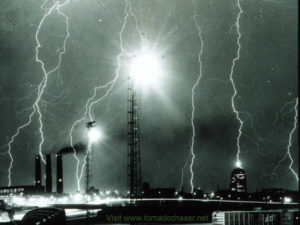
Remember the DJI drone you are using near storms can be greatly effected by the electricity lightning creates, besides adding danger to you and your crews as the remote PIC.
Lightning often strikes as far as 10 miles away from any rainfall. Many deaths from lightning occur ahead of the storm because people try and wait to the last minute before seeking shelter.
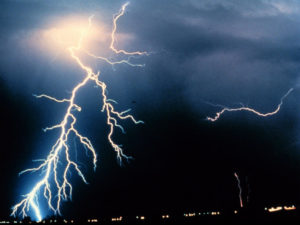
Look for dark cloud bases and increasing wind. Every flash of lightning is dangerous, even the first. Head to safety before that first flash. If you hear thunder, head to safety!
The Single Most Dangerous Place
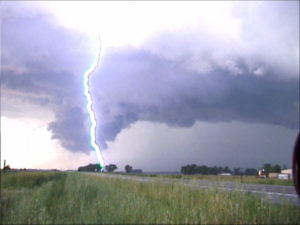
Outdoors is the most dangerous place to be during a lightning storm. When lightning is seen or thunder is heard, or when dark clouds are observed, quickly move indoors or into a hard-topped vehicle and remain there until well after the lightning storm ends. Listen to forecasts and warnings through NOAA Weather Radio or your local TV and radio stations. If lightning is forecast, plan an alternate activity or know where you can take cover quickly.
The U.S. lightning season is summer but lightning can strike year round! The Fourth of July is historically one of the most deadly times of the year for lightning. In summer, more people are outside, on the beach, golf course, mountains or ball fields. Outdoor jobs such as construction and agriculture, and outdoor chores such as lawn mowing or house painting are at their peak, putting those involved in danger.
Safety Rules
-
Postpone activities promptly. Don’t wait for rain. Many people take shelter from the rain, but most people struck by lightning are not in the rain! Go quickly inside a completely enclosed building, not a carport, open garage or covered patio. If no enclosed building is convenient, get inside a hard-topped all-metal vehicle. A cave is a good option outside but move as far as possible from the cave entrance.
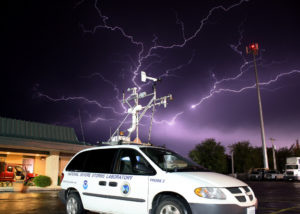
Lightning Credit: VORTEX II. Photographer: J. J. Gourley, NOAA/NSSL. - Be the lowest point. Lightning hits the tallest object. In the mountains if you are above tree line, you ARE the highest object around. Quickly get below tree line and get into a grove of small trees. Don’t be the second tallest object during a lightning storm! Crouch down if you are in an exposed area.
- Keep an eye on the sky. Look for darkening skies, flashes of lightning, or increasing wind, which may be signs of an approaching thunderstorm.
- Listen for the sound of thunder. If you can hear thunder, go to a safe shelter immediately.
- If you see or hear a thunderstorm coming or your hair stands on end, immediately suspend your game or practice and instruct everyone to go inside a sturdy building or car. Sturdy buildings are the safest place to be. Avoid sheds, picnic shelters, baseball dugouts, and bleachers. If no sturdy building is nearby, a hard-top vehicle with windows closed will offer some protection. The steel frame of the vehicle provides some protection if you are not touching metal. It is a myth that the tires on your car can protect you from lightning. Even if there’s a lien or Title Max loan on your vehicle, protecting yourself from lightning is more important since your car will fare much better if struck than you would.
- Listen to NOAA Weather Radio. Coaches and other leaders should listen for a tone-alert feature during practice sessions and games.
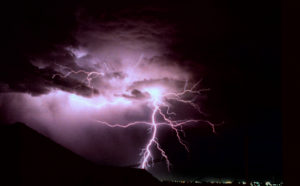
Lightning Image ID: wea00628, NOAA’s National Weather Service (NWS) Collection
Location: Orange, Australia
Photographer: Mr. Shane Lear, Orange Australia -
If you can’t get to a shelter, stay away from trees. If there is no shelter, crouch in the open, keeping twice as far away from a tree as it is tall.
-
Avoid leaning against vehicles. Get off bicycles and motorcycles.
-
Get out of the water. It’s a great conductor of electricity. Stay off the beach and out of small boats or canoes. If caught in a boat, crouch down in the center of the boat away from metal hardware. Swimming, wading, snorkling and scuba diving are NOT safe. Lightning can strike the water and travel some distance beneath and away from its point of contact.Don’t stand in puddles of water, even if wearing rubber boots.
-
Avoid metal! Drop metal backpacks, stay away from clothes lines, fences, exposed sheds and electrically conductive elevated objects. Don’t hold on to metal items such golf clubs, fishing rods, tennis rackets or tools. Large metal objects can conduct lightning. Small metal objects can cause burns.
- Move away from a group of people. Stay several yards away from other people. Don’t share a bleacher bench or huddle in a group.
- While using your DJI drone remember the PIC is responsible for the safety of the entire crew. Think safety first when flying your drone anywhere near possible lightning.
What to do if someone is struck by lightning:
- Call for help. Call 9-1-1 or your local ambulance service. Get medical attention as quickly as possible.
- Give first aid. If the victim has stopped breathing, begin rescue breathing. If the heart has stopped beating, a trained person should give CPR. If the person has a pulse and is breathing, address any other injuries.
- Check for burns in two places. The injured person has received an electric shock and may be burned. Being struck by lightning can also cause nervous system damage, broken bones, and loss of hearing or eyesight. People struck by lightning carry no electrical charge that can shock other people. You can examine them without risk.
CREDIT TO: National Weather Service and NOAA website for creating this information. We do not own any copyrights to any information on TornadoChaser website that was created by the NWS or NOAA.
